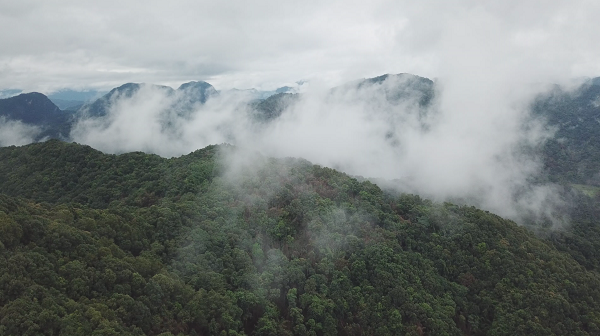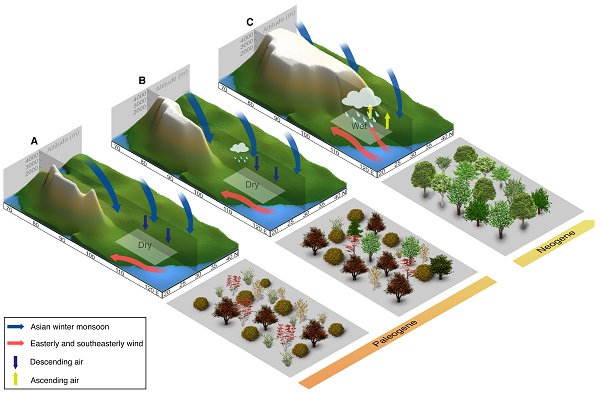Pioneering work led by a joint China-UK consortium has revealed the origin of one of the world’s most important ecosystems, the East Asian biodiversity ”hotspot,” thus solving a longstanding riddle as to what prompted its formation and evolution.
In a recent study published in Science Advances, a joint research team led by scientists from Xishuangbanna Tropical Botanical Garden (XTBG) of the Chinese Academy of Sciences, the University of Bristol (UK) and the Open University (UK) has revealed the first direct mechanism explaining how the growth of mountains in Northern Tibet drastically altered climate, vegetation and plant diversity in East Asia.
The researchers used an innovative climate model that simulates vegetation and plant diversity, coupled with spectacular new fossil finds, to demonstrate Northern Tibet’s importance in transforming what was previously near desert into lush forests.
“We approached this question by integrating modeling results and fossil data,” said Dr. LI Shufeng from XTBG, lead author of the study.
The researchers conducted 18 sensitivity experiments using different Tibetan topographies representing various late Paleogene to early Neogene conditions, which tested almost all possible Tibetan orographic evolution scenarios.
They found that from the late Paleogene to the early Neogene (40-23 million years ago), the growth of the north and northeastern portion of Tibet was the most important factor in the development of biodiversity, because it increased rainfall, especially winter rainfall, over East Asia where previously dry winter conditions had existed. This allowed the development of a stable, wet and warm climate that was vital for a variety of unique plants and animal species to evolve in vast numbers, creating what we know today as a biodiversity hotspot. Today, it is one of the world’s natural medicinal cabinets and a source of important new pharmaceutical drugs.
According to Prof. Paul J. Valdes of the University of Bristol, most previous studies attempting to identify the source of this hotspot focused on southern Tibet and the Himalaya. But Valdes said the rise of northern Tibet was the key.
“The topography of northern Tibet decreases the East Asian winter monsoon winds in the southern part of China, causing wetter winters in eastern Asia and this allows the expansion of vegetation and biodiversity,” said Valdes.
So enigmatic was the change that even in Chinese folklore this area is known as the “land of fish and rice,” due to its agricultural wealth, fertile soils, pleasant climate and variety of unique species.
“If there was no northern Tibetan growth, there would be no ‘land of fish and rice’ in eastern Asia,” said Prof. ZHOU Zhekun from XTBG.
Contact
LI Shufeng Ph.D.
Xishuangbanna Tropical Botanical Garden, Chinese Academy of Sciences
E-mail: lisf@xtbg.org.cn

The cloud forest of southern China, home to some of the world's rarest species.

Snowy mountain peaks of Northern Tibet (Photo by ZUO Linren)

Simplified Tibet growth stages, climate, and vegetation changes from the 55 million years ago
(A) to 40 million years ago (B) where uplands in southern Tibet grow as Indian started to collide with Asia.
The strong Asian winter monsoon pushed further South into East Asia causing drier climate with poorer plant and animal diversity.
As northern Tibet grows (C), the Asian winter monsoon is progressively blocked allowing moisture-rich southeasterly winds to influence East Asia.
This results in a warmer and wetter climate supporting more of plant and animal life in the region. (Image by LI Shufeng)



